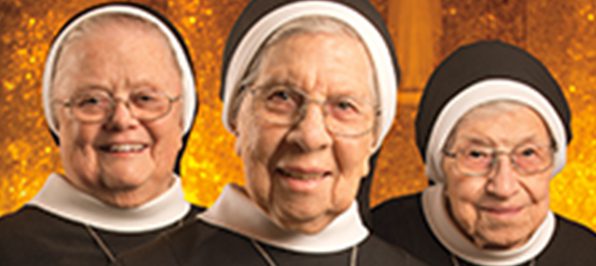Annual Collection Supports Eldercare Needs of Religious Communities

The annual Retirement Fund for Religious collection will be held Dec. 10-11, 2016, in the Diocese of St. Petersburg. Coordinated by the National Religious Retirement Office (NRRO), the parish-based appeal benefits nearly 33,000 senior Catholic sisters, brothers and religious order priests whose communities lack retirement savings.
The Diocese of St. Petersburg contributed $215,558.25 to the last collection. In 2016, the Sisters of St. Clare received financial assistance made possible by the Retirement Fund for Religious. Women and men religious who serve or have served in the diocese but whose communities are based elsewhere may also benefit from the annual appeal.
Catholic bishops of the United States initiated the collection in 1988 to address the significant lack of retirement funding among U.S. religious communities. Proceeds help underwrite retirement and health-care expenses. Nearly 95 percent of donations directly support senior religious and their communities.
The appeal raised $30.7 million in 2015, the sixth highest total in its history. As a result, the NRRO distributed $25 million to 401 religious congregations. These funds supplement the day-to-day care of elderly religious and help their congregations implement long-range retirement strategies. Throughout the year, additional funding is allocated for congregations with the greatest needs.
“We are humbled by the love and support that Catholics across the nation share with our senior religious,” said Sister Stephanie Still, a member of the Sisters of the Presentation and newly appointed NRRO executive director.
The retirement-funding deficit is rooted in low salaries and changing demographics. Traditionally, Catholic sisters, brothers and religious order priests—known collectively as women and men religious—worked for small stipends. As a result, many religious communities lack adequate retirement savings. At the same time, elderly religious are living longer and now outnumber younger, wage-earning religious. Among communities providing data to the NRRO, 68 percent have a median age of 70 or above. The income of those engaged in compensated ministry cannot keep pace with the growing cost of eldercare.
In addition to providing financial support for immediate needs, proceeds from the annual appeal underwrite educational initiatives in retirement planning and eldercare delivery. Workshops, webinars and print resources, for example, address topics ranging from property-planning to caring for members with dementia.
“Our mission is to help religious communities meet current eldercare needs while preparing for the ones to come,” said Sister Stephanie. “We remain grateful for all those who support these efforts.”
Visit retiredreligious.org to learn more.

